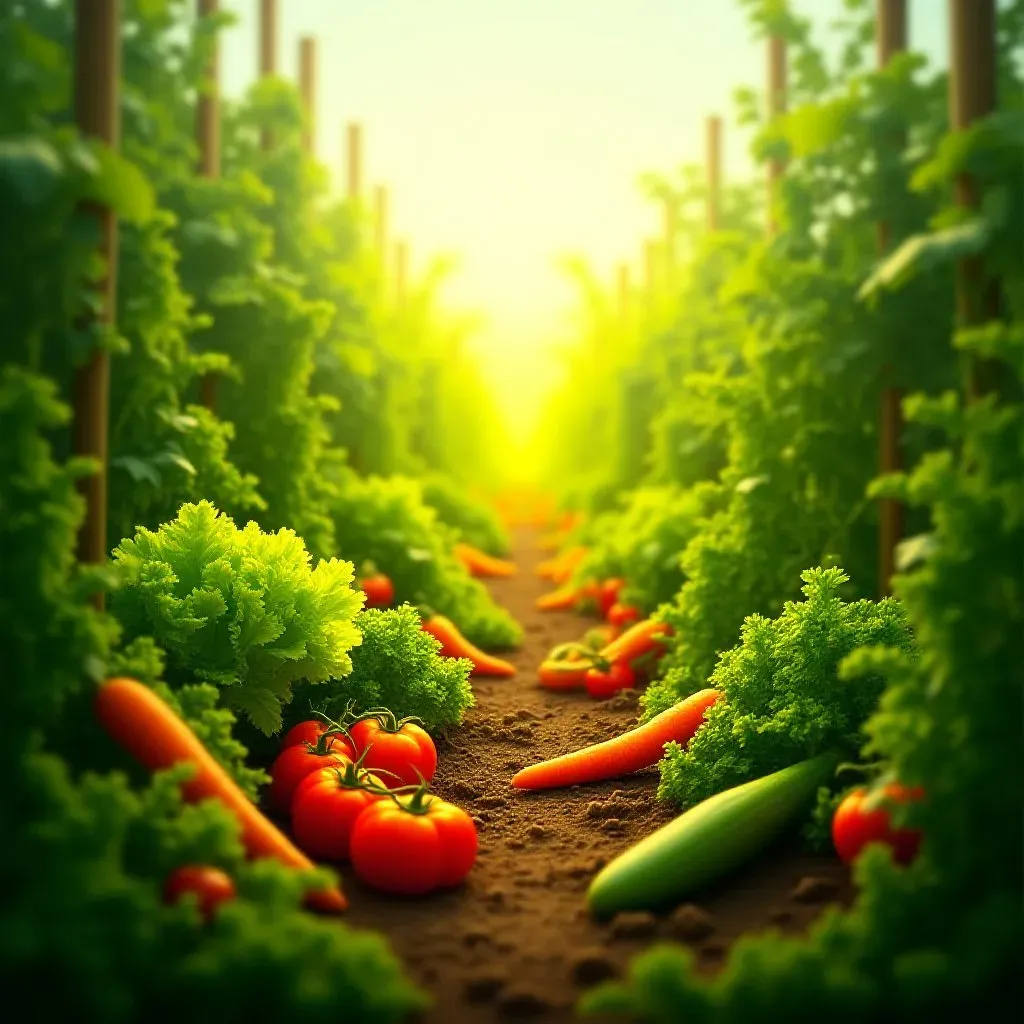Table of Contents
This guide helps you plan a vegetable garden layout for max yield, pick easy beginner veggies like lettuce and radishes, maintain soil health naturally with compost and boosters, and harvest store produce effectively with tips on timing and methods.
Question | Answer |
|---|---|
How much sun does a vegetable garden need daily? | Pick a sunny spot that gets 6-8 hours of sun daily. |
What layout works best for small vegetable gardens? | Use square foot gardening by dividing space into 1-foot squares and planting multiple crops per square. |
Which vegetables suit beginners in a potager? | Grow easy ones like lettuce, radishes, beans, zucchini, and carrots for quick harvests and high yields. |
How to maintain soil health naturally? | Test pH to 6.0-7.0, add compost every season, and use boosters like coffee grounds or eggshells. |
When to harvest and store tomatoes? | Harvest tomatoes when firm and full color, then keep at room temp until ripe and fridge for max 3 days. |
Plan your vegetable garden layout for maximum yield.
Start your vegetable garden layout by picking a sunny spot that gets 6-8 hours of sun daily.
Measure your space to decide garden size - beginners aim for 4x4 feet.
Draw a simple sketch on paper.
Include wide paths at least 2 feet across for easy access.
Place tall plants like tomatoes on the north side to avoid shading shorter ones.
Best layouts for small spaces
Use square foot gardening.
Divide into 1-foot squares.
Plant multiple crops per square based on size.
Square Size | Crops per Square |
|---|---|
1 foot | 1 tomato, 4 lettuce, 16 carrots |
2 feet path | Access all beds |
Companion planting tips
- Plant basil near tomatoes to boost growth.
- Put marigolds by veggies to deter pests.
- Avoid potatoes near tomatoes.
Rotate crops yearly to keep soil healthy.
Check this garden drawing guide for more ideas.
See crop rotation tips next.
Choose the best vegetables to grow in your potager.
Pick veggies based on your local climate and space.
Go for easy ones if youre new.
Check hardiness zones for success.
Top easy vegetables for beginners
Vegetable | Days to Harvest | Why Grow It |
|---|---|---|
Lettuce | 30-45 | Quick, cut and regrow |
Radishes | 20-30 | Fastest crop ever |
Beans | 50-60 | Nitrogen fixers, climb up |
Zucchini | 45-55 | High yield one plant |
Carrots | 60-70 | Sweet from home soil |
What to avoid at first
- Eggplant needs heat
- Corn takes big space
- Artichokes take years
Grow what you eat most.
For Nov plant cold hardy like kale spinach.
See more potager veggies.
Match with seeds guide.
Maintain soil health in your vegetable garden naturally.
Test your vegetable garden soil pH with a kit.
Adjust to 6.0-7.0 for most veggies.
Add compost every season.
Make your own compost
- Layer greens like veggie scraps.
- Add browns like leaves.
- Turn weekly keep moist.
Use worm bin for faster results.
Natural soil boosters
Booster | How to Use | Benefit |
|---|---|---|
Coffee grounds | Sprinkle around plants | Acidifies boosts worms |
Eggshells | Crush add to holes | Calcium for tomatoes |
Banana peels | Bury near roses | Potassium kick |
Mulch and cover crops
Spread 2-3 inches straw or leaves on soil.
Plant clover in off season.
Avoid tilling preserve microbes.
Check bio potager tips for more.
Harvest and store produce from your vegetable garden effectively.
Harvest in the morning when cool.
Use sharp scissors snip stems clean.
Harvest signs by veggie
Vegetable | Harvest When | Storage Tip |
|---|---|---|
Tomatoes | Firm full color | Room temp till ripe fridge max 3 days |
Lettuce | Outer leaves big | Fridge in damp cloth 1 week |
Carrots | 1 inch top out | Cool moist sand 2 months |
Beans | Pods plump snap | Fridge bag 1 week |
Potatoes | Vines die tops dry | Dark cool 40F months |
Winter storage prep
- Dig roots before frost.
- Cure onions garlic dry spot 2 weeks.
- Freeze extras blanch first.
- Can tomatoes for year round.
Check veggie garden weekly pick often boosts yield.
